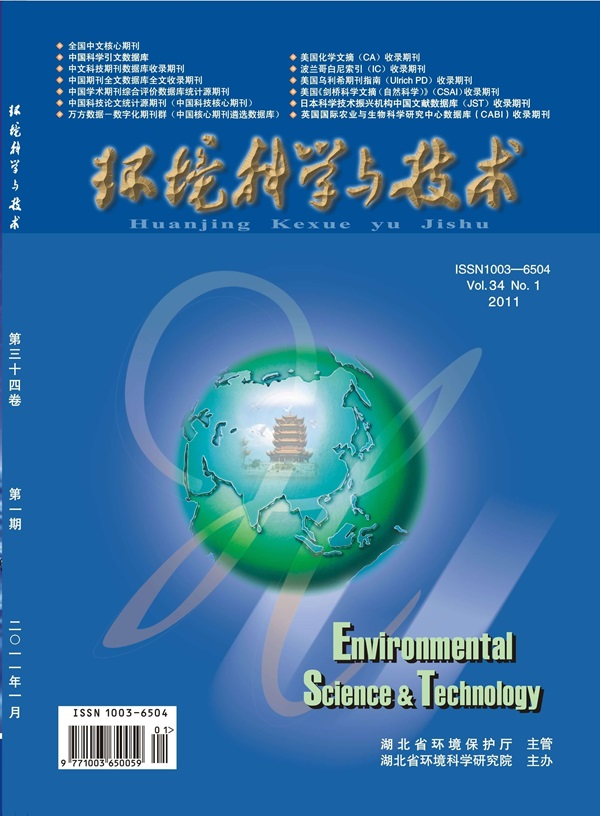矿物-有机物系统中羟基自由基的非均相光化学生成:氧化铁的双重作用。
IF 10.8
1区 环境科学与生态学
Q1 ENGINEERING, ENVIRONMENTAL
引用次数: 0
摘要
光敏有机分子和半导体矿物已被广泛报道在水生环境中产生羟基自由基(•OH)。然而,采用多组分系统的研究仍然有限。本研究探讨了在具有不同官能团的有机化合物存在下,矿物质在•OH光化学生成中的作用。使用模型化合物来代表溶解有机物(DOM)中的关键部分,我们研究了单组分系统(有机物和矿物质)和复合系统(铁-水合物-有机物)生成•OH的能力。我们的研究结果表明,低分子量有机物,如草酸盐和柠檬酸盐,富含羧基,当与水合铁结合时,显著提高•OH的产生。相反,具有芳香或类醌结构的有机分子(如奥尔德里奇腐殖酸(AHA)和9,10-蒽醌-2,6-二磺酸二钠盐(AQDS))倾向于抑制•OH的产生。具体来说,铁酸盐-柠檬酸盐体系在太阳光照下的•OH产量增加了一倍,在pH为3的可见光下增加了20倍。相反,水合铁的加入显著抑制了AQDS系统中•OH的生成,而AQDS系统本身具有很强的生成•OH的能力。此外,矿物转化和有机碳损失表明•OH光化学生成可以加速铁和碳的地球化学循环。这些见解加深了我们对•OH生成机制和铁-碳在辐照界面上相互作用的环境影响的理解。本文章由计算机程序翻译,如有差异,请以英文原文为准。
Heterogeneous Photochemical Generation of Hydroxyl Radical in Mineral-Organics Systems: Dual Roles of Iron Oxides.
Photosensitive organic molecules and semiconducting minerals have been widely reported to produce hydroxyl radicals (•OH) in aquatic environments. However, studies employing multicomponent systems remain limited. This study investigates the role of minerals in •OH photochemical generation in the presence of organic compounds with distinct functional groups. Using model compounds to represent key moieties in dissolved organic matter (DOM), we examined the capacity of both single-component systems (organic matter and minerals) and composite systems (ferrihydrite-organic matter) to generate •OH. Our findings demonstrate that low-molecular-weight organics such as oxalate and citrate, rich in carboxyl groups, significantly enhance •OH production when combined with ferrihydrite. In contrast, organic molecules with aromatic or quinone-like structures (e.g., Aldrich humic acid (AHA) and 9,10-anthraquinone-2,6-disulfonic acid disodium salt (AQDS)) tend to suppress •OH production. Specifically, the ferrihydrite-citrate system shows a doubling of •OH production under solar light and a 20-fold increase under visible light at pH 3. Conversely, the addition of ferrihydrite significantly inhibited •OH production in the AQDS system, which by itself had a strong ability to generate •OH. Furthermore, mineral transformation and organic carbon loss suggest that •OH photochemical generation could accelerate the geochemical cycling of iron and carbon. These insights deepen our understanding of the mechanisms underlying •OH generation and the environmental implications of iron-carbon interactions at the irradiated interfaces.
求助全文
通过发布文献求助,成功后即可免费获取论文全文。
去求助
来源期刊

环境科学与技术
环境科学-工程:环境
CiteScore
17.50
自引率
9.60%
发文量
12359
审稿时长
2.8 months
期刊介绍:
Environmental Science & Technology (ES&T) is a co-sponsored academic and technical magazine by the Hubei Provincial Environmental Protection Bureau and the Hubei Provincial Academy of Environmental Sciences.
Environmental Science & Technology (ES&T) holds the status of Chinese core journals, scientific papers source journals of China, Chinese Science Citation Database source journals, and Chinese Academic Journal Comprehensive Evaluation Database source journals. This publication focuses on the academic field of environmental protection, featuring articles related to environmental protection and technical advancements.
 求助内容:
求助内容: 应助结果提醒方式:
应助结果提醒方式:


